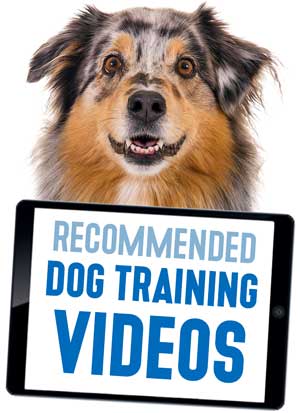
Using Operant Conditioning to Stop Counter Surfing
See Part 1 of this article here.
In addition to the operant conditioning principle of extinction you can use positive punishment and positive reinforcement to help stop counter surfing.
Let's start with "positive punishment." This is often confused with "negative reinforcement" as it's not intuitive to think of punishment as being something "positive." In this sense it just means that there is an actual punishment brought to bear as a response to the unwanted behavior.
Using corrections like this is the least effective and most difficult way to get the results you want. In fact it's easy to mess things up and make things worse. An example might be that your dog is happily checking out the counter. They find something within reach, grab it and pull it to the floor. However, before they are able to enjoy their ill-gotten gains you come in and catch them in the act. You scold them and take it away thinking you have taught them that what they did was bad and they won't be likely to do it again. Wrong. You were too late.
Timing Is Crucial With Dog Training
They already had the food on the floor (or in another room) so they won't associate your ranting with not taking food from the counter. The only thing you taught them was that they need to be extra careful when you are around because you are a party-pooper and are likely to ruin their fun if you catch them with some yummy food that was left out for them.
Other forms of positive punishment might be the use of cans with washers that make a loud noise. Again, timing is everything when you employ these methods. If you toss the can or blast a horn after the fact it won't help. These methods can work but they are time consuming, you have to be vigilant and your timing has to be impeccable. The positive punishment has to occur at the moment they are accessing the food on the counter in order for them to develop the direct association between the two.
Positive Reinforcement Is Positively Positive Dog Training
An all-around better approach in your situation might be "positive reinforcement." This is where you reward your dog for the kind of behavior you want instead of punishing them for doing things you don't want.
How would positive reinforcement work to stop counter-surfing? What you want to do is teach your dog that just because food is available does not mean they can just take it. They have to be able to be around food without trying to take it. The only reason they have for doing that is if they see there is a greater benefit in not taking it because they know there will be a reward coming for the desired behavior.
In the beginning you might have to have your dog sitting and staying on their mat or dog bed while food is available. It may even be necessary to crate them while they experience the presence of food without the ability to get it.
Then start with exercises like placing a treat on the counter and having them sit. As soon as they sit reward them with a small treat—NOT the one from the counter. Instead give them a treat from your pocket. In the beginning give small treats as you repeat this exercise. You want to get as many repetitions as possible. Don't over do it; keep training sessions to about 5 to 10 minutes.
They will soon learn that they are not rewarded directly by the food on the counter. They are only rewarded when they see food on the counter and they sit. Then, once they exhibit the desired behavior the reward comes from you. So now available food will trigger sitting or laying on their mat (or whatever the good behavior you have reinforced for) as you have replaced the reward they are seeking from the food on the counter with a reward they look to you for.
The Key To Stop Counter Surfing And Food Stealing
If any of this is to work you absolutely must make sure of one thing. That they are not successful in self-rewarding by taking food from the counter. It is best if you use multiple approaches. Dog proof your counters. Make sure that food temptations are simply not there. Start with this and add other approaches to ensure success.
Should you decide to employ positive punishment training techniques you have to be ever vigilant and precise in your timing. Whether you use loud noise, bad tasting things to dissuade or water spray remember to use them with the minimum amount necessary. Bear in mind that used incorrectly this form of correction could make things worse or damage your relationship with your dog.
By dog proofing and using positive reinforcement you have the best chance for success. Preventing your dog from self-rewarding by making you the source of rewards and being absolutely consistent will give you and your guests the best chance of sitting down and enjoying that turkey dinner you worked so hard on.
Have Dog Training Questions?
Check out these introductory dog training videos...
I want my dog to stop being aggressive.
I want some help training my new puppy.
I want my dog to stop barking at everything.
Get Australian Shepherd Info, Website Updates, Special Offers, and Cartoons...
FREE GIFT
You'll also receive a free copy of the ebook
My Everyday Dog Training Tools
by professional dog trainer Daniel Abdelnoor, "Doggy Dan"












 Loading Image...
Loading Image...